Londoners walking along the Thames River near Potter’s Field have a new treat waiting for them, stacks of charred wood. Along with their usual mochachinos, pack of fags (no angry emails, that means cigarettes in the UK) and a copy of The Mirror, the Queen’s subjects are treated with the latest creations from architects DSDHA. “Pavilions” are a pair of distinctively designed multi-purpose kiosks. One of them was created by layering stacks of whitened calcified timber and features a green roof. The other darker one – is the first charred timber-clad structure in the UK, created in a technique similar to the Japanese Yakisugi. ‘It almost resembles a grotto’, says DSDHA ‘s Deborah Saunt. Jenga anyone?
Architect: DSDHA
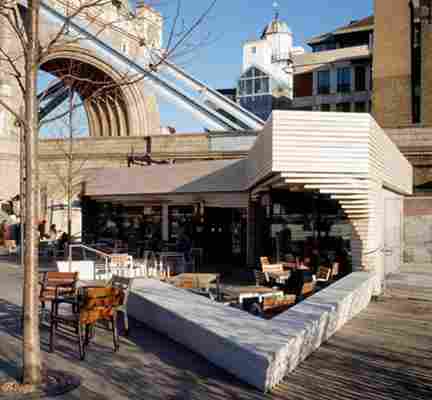
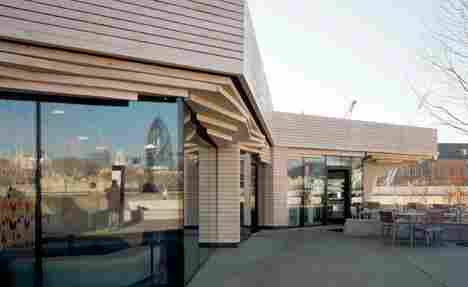
Podcast Episode 3
Interview with REthink development about Cherokee Studios , an LEED Platinum certified live/work building in Los Angeles, CA. Everything from water filtration, energy efficiency, LED lighting, right down to the zero VOC free paints and finishes makes Cherokee Studios one of the “greenest” buildings in California.
I originally wrote about them this past June and was so excited about the building (soon to open this September), I scored an interview with the principals of REthink Development, Greg Reitz and Steve Edwards. A ridiculous amount of work goes into building anything in California with its strict building codes but going for the lust worthy LEED Platinum certification takes it to another level. REthink specializes in this kind of work so these guys are pros.
If you’re interested in architecture and the nitty gritty behind buildings like Cherokee Studios, check out this podcast. I have to apologize for the audio quality. Skype was being a little testy. Thanks so much to Greg and Steve of REthink and Aunny and Haily of Secret Agent PR for hooking this up. I can’t wait to see the building and Greg, Steve if you’re reading this. I still want to live there – for freeeeeeee.
Episode 3: REthink for Cherokee Studios
Subscribe via iTunes
[podcast]https://www.yankodesignom/images/design_news/2009/08/25/rethink_podcasp3[/podcast]
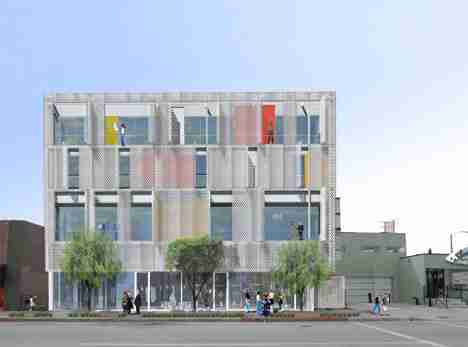
Sustainable architectural designs that coexist with nature, and encourage an eco-friendly way of living!
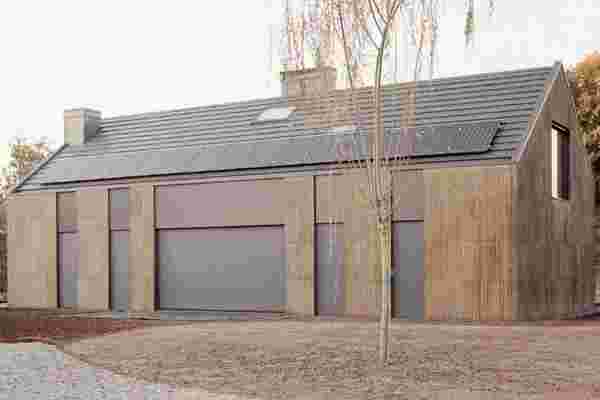
With the world turning topsy turvy in 2020, living in a sustainable , conscious, and smart manner has never been more imperative. Our homes should seamlessly integrate with, and nourish the planet, not drain her resources and reduce her lifespan. Being at one with Planet Earth, while taking rigorous care of her has never been more of a priority. In an effort to encourage an eco-friendly way of life, sustainable architecture has been gaining immense popularity among architects! They have been designing sustainable homes. These homes aim to harmoniously merge with nature, co-existing with it in peace, and allowing us to live in equilibrium with the environment. And, not to mention most of them also manage to be quaint, cute, and super pleasing to the eyes!
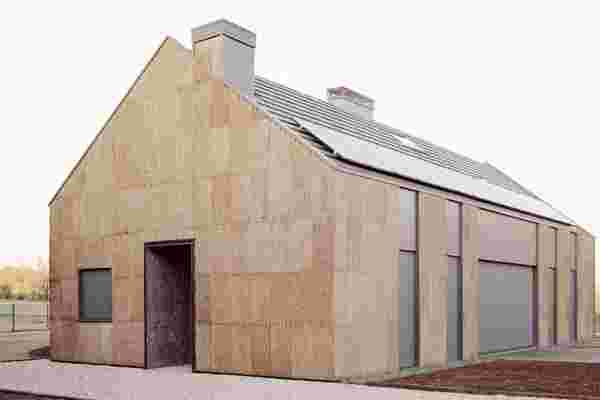
LCA Architetti designed a home made from cork, straw, and wood, creating a minimal and sustainable home that is close and connected to nature. Deemed, The House of Wood, Straw, and Cork, it aims to minimize the impact and damage on the environment, by creating a home built from recyclable and prefabricated construction materials. The textured cork cladding minimizes the building’s energy demand. Sustainable, delicate, and quaint, it’s a perfect home in the Italian countryside!
Studio Vural designed the Dune House, an off-the-grid home on the shores of Cape Cod. The house has an autonomous power source and network, backed up by wind turbines and a solar field, which produces clean and pure energy. The home is inspired by a squid’s rainbow flash, by their ability to power themselves. Hence, the end result was a house that powers itself! The architect describes it as, “the next generation of hyper-sustainable houses which must be aggressively pursued to turn the tables on climate change.”
Woonpioniers designed the sustainable and modular Indigo Cabins. Bio-based materials were used to create homes that nourish the planet and provide an intimate connection to nature. Wood, cellulose, straw, hemp fibers, wool, earth, and clay were used in building the home. The cabins can be easily assembled, reassembled, and dismantled. It effectively minimizes the utilization of material and energy, inculcating an eco-friendly and environmentally conscious home.
For the greenhouse , Hague drew inspiration from the Mimosa Pudica plant which closes its leaves when it senses danger and that is how she came up with collapsible beams featuring inflatable hinges. It gave the greenhouse a unique origami effect and also enables the structure to be easily flat-packed for transportation/storage. Rows of these bamboo-paper greenhouses can be connected to shared houses constructed from the soil, which has a high thermal mass, providing shelter from extreme temperatures in India.
The Shenzhen Terraces are designed to encourage sustainable living and the structure will be the center of the student community at Universiade New Town in Longgang District. Think of it as a multi-dimensional urban living room for the busy college town. The terraces are all stacks of unusual shapes because the idea is to build them around the existing outdoor public places – evolving spaces without disrupting them. All the buildings in the structure will be connected through the second floor and the small outdoor atriums throughout the community are actually places where the terraces converge to connect. “Shenzhen Terraces aims to bring vitality and innovation to the area through a seamless integration of landscape, leisure, commerce, and culture,” says MVRDV.
The students from the Southern California Institute of Architecture transform India’s Indira Gandhi International Airport in New Delhi into a sustainable and culturally engaging hub that is also capable of purifying the air. The idea was to design a structure that can reduce the environmental impact of air travel while enhancing mobility across New Delhi which is the capital of India and one of the most polluted cities in the world. The Green Gateway proposes a future where airports are more than buildings and let the passengers connect with the site through every element of the structure. The concept has been envisioned for a future where flying cars are the norm and that means a drastic increase in domestic air travel.
Created with biophilic principles and parametric design tools, the hypnotizing prefab timber modules, Mitosis will be optimized to be flexible and scalable. This will let the building continue expansion with time in several different urban settings while accommodating the changing times which often results in changing needs. The ability to expand the structural hub is where the building gets its name from. Mitosis can be used for a wide range right from creating communities with off-grid, single-family homes to high-density, mixed-use zones in cities. GG-loop’s pilot project Freebooter was the foundation for Mitosis and is in itself an award-winning pair of prefabricated, cross-laminated timber apartments that were completed last year in Amsterdam.
BiodiverCity will be planned to be a sustainable city where people and nature not only co-exist but thrive. There will be “buffers” between 50 to 100 meters that will surround each district in order to form a harmonious relationship between the people, the land, and the wildlife – think of these buffers as architectural glues for the new ecosystem. To keep native animals safe in spots that are being inhabited by humans, the builders will also include canopies, waterways, and boardwalks. In line with this strong green approach, there will also be green roofs and open spaces to create a symbiotic relationship between people and nature.
The team at i29 Architects wanted to maximize their client’s living space indoors, so a clever combination of pitched roofing and dramatic diagonal coping gives the floating home high ceilings, a striking exterior display, and protects the roof from heavy rainfall. From the start, architecture and design went hand in hand for the team at i29 – one influencing and catering to the other, and vice versa. Further on this, i29 says, “Architecture and interior design are always intertwined and connected on each level to make a clear and unified experience. The floating home exterior design is the result of a space extensional study within the interior and vice versa.” Inside, the floating home’s three floors are connected by an atrium, which extends through all three levels. Just above water-level, a split connection in the atrium’s middle levels leads to a loggia terrace for unobstructed views of the canal.
The Luum is an eco-friendly bamboo structure located in a conserved area in a native jungle, within a conservation-minded residential development called Luum Zama. The temple’s design is highly influenced by parametric architecture and features five catenary arches made from Bamboo. Designed by CO-LAB Design Office, the temple’s design uses bamboo sustainably grown in the neighboring Chiapas state. Flat sections of bamboo were bent and cold-molded on site, before being shaped into the 5 catenary arches. For structural stability, the designers wove together multiple bamboo beams into a triangular mesh, with a dual-layered woven bamboo lattice on top for further cover. Sitting atop the grand bamboo structure is a canopy of local Zacate, or straw thatch, giving the structure protection from heat and even rain.








